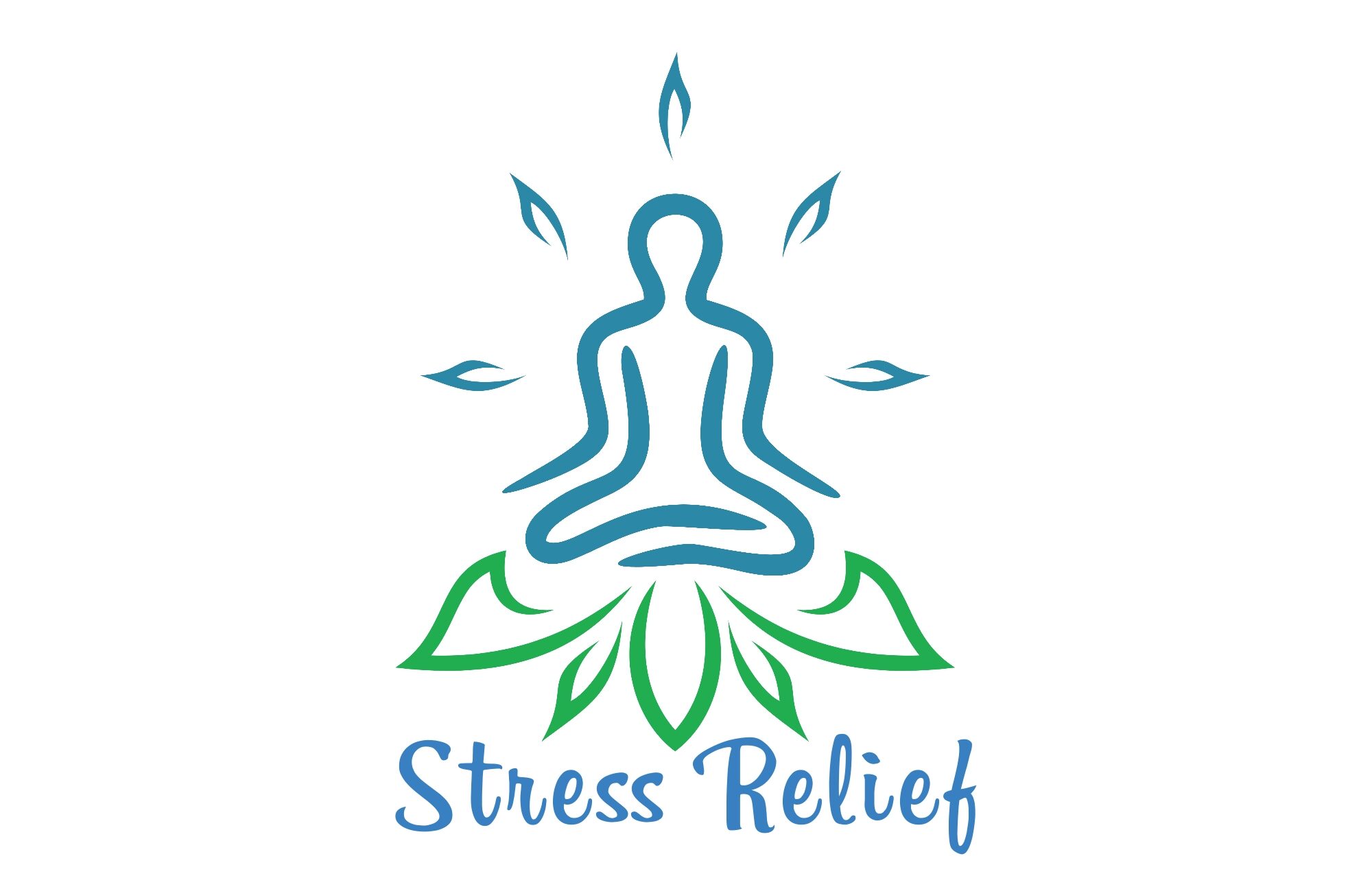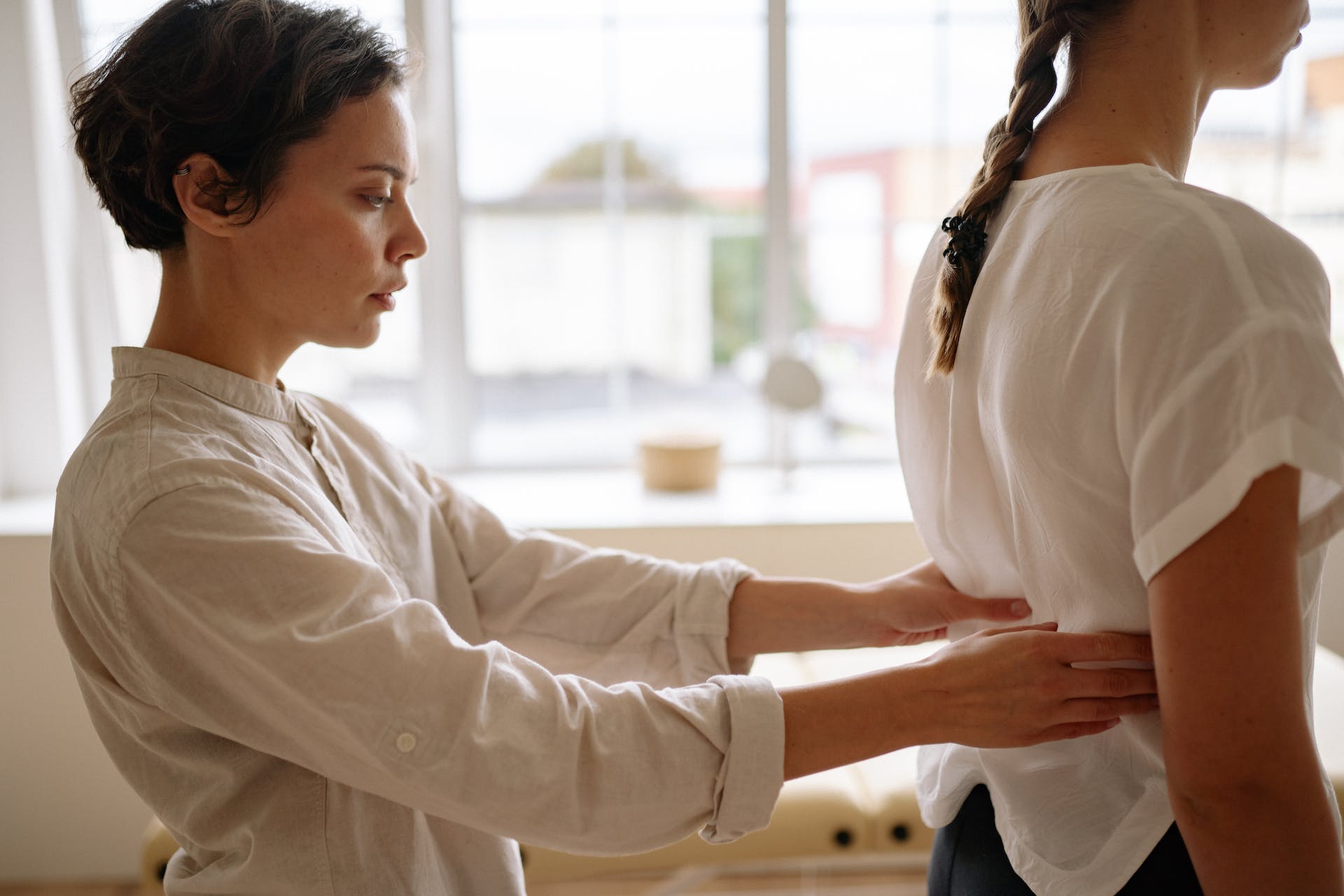1. Introduction
A. Understanding the impact of stress on lower back pain
Stress is a common culprit behind lower back pain. When we experience stress, our muscles tend to tighten up, and this tension often manifests in the lower back region. The relationship between stress and lower back pain is a complex one, as stress not only affects our physical well-being but also our mental and emotional state. By understanding how stress impacts our bodies, we can begin to address the root causes of our lower back pain. In this article we will know about the important stress relief exercises for lower back pain.
B. Importance of stress relief exercises for holistic pain management
Managing lower back pain requires a holistic approach that goes beyond simply addressing the physical symptoms. Stress relief exercises are essential in this regard, as they help to target the underlying causes of our pain. By incorporating stress relief exercises into our daily routine, we can effectively reduce tension in our muscles, alleviate stress, and promote overall well-being.

C. Overview of the benefits of incorporating exercises into a daily routine
Incorporating exercises into our daily routine offers numerous benefits for managing lower back pain. Regular exercise helps to strengthen the muscles supporting the spine, improve flexibility, and increase blood flow to the affected area. Additionally, exercise releases endorphins, which are natural painkillers that can effectively reduce the discomfort associated with lower back pain. By making exercise a priority, we can significantly improve our quality of life and reduce the impact of lower back pain.
2. Stretching Exercises for Lower Back Pain Relief
A. Child’s Pose
- Step-by-step instructions for performing Child’s Pose
- Start by kneeling on the floor, keeping your knees hip-width apart.
- Slowly lower your upper body forward, extending your arms in front of you.
- Rest your forehead on the ground and relax your neck and shoulders.
- Hold this position for 30 seconds to 1 minute, focusing on deep, slow breaths.
- Benefits of this gentle stretching exercise for relieving tension in the lower back
Child’s Pose is an excellent stretching exercise for relieving tension in the lower back. This pose gently stretches the muscles in the lower back, hips, and thighs, providing much-needed relief to those suffering from lower back pain. It also helps to improve flexibility and promote relaxation, making it an ideal exercise for stress relief.
- Precautions and modifications for individuals with limited mobility
If you have limited mobility or find it challenging to perform Child’s Pose, you can modify the exercise by using a bolster or folded blanket to support your upper body. This modification allows you to maintain the integrity of the stretch while minimizing strain on your joints and muscles.
B. Cat-Cow Stretch

- Detailed guidance to perform the Cat-Cow Stretch correctly
- Begin on all fours, aligning your wrists under your shoulders and your knees under your hips.
- On an inhale, arch your back and lift your chest towards the ceiling, allowing your belly to sink towards the floor (Cow Pose).
- Exhale and round your back, dropping your head and tailbone towards the floor (Cat Pose).
- Repeat this fluid movement, synchronizing your breath with each transition.
- Benefits of this exercise for improving flexibility and easing lower back pain
The Cat-Cow Stretch is an excellent exercise for improving flexibility and easing lower back pain. This dynamic movement helps to mobilize the spine and increase the flexibility of the muscles surrounding the lower back. It also promotes better posture and relieves tension in the back and neck.
- Tips for enhancing the effectiveness of the Cat-Cow Stretch
To enhance the effectiveness of the Cat-Cow Stretch, focus on the quality of your breath. Take slow, deep breaths, inhaling as you move into Cow Pose and exhaling as you transition into Cat Pose. This mindful breathing helps to relax the body and deepen the stretch, providing greater relief from lower back pain.
C. Standing Forward Bend
- Step-by-step instructions for performing the Standing Forward Bend
- Stand tall with your feet hip-width apart.
- Slowly hinge forward at the hips, allowing your upper body to fold over your legs.
- Let your head and neck relax, and grab onto your shins, ankles, or feet if comfortable.
- Hold this position for 30 seconds to 1 minute, focusing on deep breaths.
- How this exercise helps elongate the spine and relieve lower back pain
The Standing Forward Bend is a beneficial exercise for elongating the spine and relieving lower back pain. By folding forward, you create space between each vertebra, which helps to decompress the spine and reduce pressure on the lower back. This exercise also stretches the hamstrings and improves flexibility in the hips, providing additional support to the lower back.
- Modifications for individuals with tight hamstrings or limited flexibility
If you have tight hamstrings or limited flexibility, you can modify the Standing Forward Bend by bending your knees slightly or placing your hands on a block or chair for support. These modifications allow you to maintain proper alignment and gradually increase your flexibility over time.
3. Strengthening Exercises for Lower Back Pain Relief
A. Bridge Pose
- Technique for executing the Bridge Pose with precision
- Start by lying on your back with your knees bent and feet flat on the ground, hip-width apart.
- Place your arms by your sides, palms facing down.
- On an inhale, press your feet into the ground and lift your hips towards the ceiling.
- Engage your glutes and core muscles as you hold the position for 30 seconds to 1 minute.
- How this exercise strengthens lower back muscles and reduces pain
The Bridge Pose is a powerful exercise for strengthening the lower back muscles and reducing pain. By lifting the hips, this exercise engages the muscles in the lower back, glutes, and hamstrings, promoting stability and relieving pressure on the spine. Regular practice of the Bridge Pose helps to improve posture and provide long-term relief from lower back pain.
- Variations and modifications for individuals at different fitness levels
For individuals at different fitness levels, there are variations and modifications of the Bridge Pose that can be beneficial. You can try lifting one leg at a time while in the Bridge Pose to increase the challenge and engagement of the muscles. Additionally, using a yoga block or bolster under the sacrum can offer support and make the exercise more accessible for beginners or individuals with limited strength.
B. Bird Dog

- Detailed guidance on performing the Bird Dog exercise correctly
- Start on all fours, aligning your wrists under your shoulders and your knees under your hips.
- Extend your right arm forward while simultaneously extending your left leg behind you.
- Keep your core engaged and your spine neutral as you hold the position for a few seconds.
- Return to the starting position and then repeat with the opposite arm and leg.
- Benefits of this dynamic exercise for improving core stability and alleviating lower back pain
The Bird Dog exercise is highly effective in improving core stability and alleviating lower back pain. This exercise targets the deep stabilizing muscles of the core, including the transverse abdominis and multifidus, which play a crucial role in supporting the lower back. By strengthening these muscles, the Bird Dog exercise helps to improve overall postural alignment and reduce the risk of lower back injuries.
- Precautions for individuals with existing back conditions
Individuals with existing back conditions should exercise caution when performing the Bird Dog exercise. It is essential to maintain proper form and avoid overarching or rounding the back during the movement. If you have any concerns or are unsure about whether this exercise is suitable for you, consult with a healthcare professional or a certified physical therapist.
C. Pelvic Tilt
- Step-by-step instructions for performing the Pelvic Tilt exercise
- Lie on your back with your knees bent and feet flat on the floor, hip-width apart.
- Slowly tilt your pelvis forward, flattening your lower back against the floor.
- Hold this position for a few seconds, then release and return to the starting position.
- Repeat the movement, gradually increasing the duration of each tilt.
- How this exercise targets the deep abdominal muscles to support the lower back
The Pelvic Tilt exercise specifically targets the deep abdominal muscles, such as the transverse abdominis. These muscles play a crucial role in stabilizing the lower back and maintaining proper posture. By strengthening the deep abdominal muscles, the Pelvic Tilt exercise helps to support the lower back and reduce the strain on the surrounding muscles, leading to a decrease in lower back pain.
- Tips for maintaining proper form and maximizing the effectiveness of the Pelvic Tilt
To maximize the effectiveness of the Pelvic Tilt exercise, focus on maintaining proper form and engaging the deep abdominal muscles throughout the movement. Avoid excessive arching or rounding of the back, and concentrate on the sensation of drawing your belly button towards your spine. Gradually increase the intensity and duration of each tilt to challenge the muscles and promote further strengthening.
4. Mind-Body Exercises for Lower Back Pain Relief
A. Yoga
- Overview of yoga’s holistic approach to stress relief and lower back pain management
Yoga offers a holistic approach to stress relief and lower back pain management. The combination of physical postures, breathing exercises, and meditation found in yoga promotes relaxation, balances the body and mind, and improves overall well-being. By incorporating specific yoga poses into our routine, we can effectively alleviate lower back pain while addressing the underlying stress and tension that contribute to our discomfort.
- Recommended yoga poses and sequences for relieving lower back pain
There are several yoga poses and sequences that are particularly effective for relieving lower back pain. Poses such as Downward Dog, Cobra Pose, and Sphinx Pose help to stretch and strengthen the muscles surrounding the lower back, promoting flexibility and reducing pain. Additionally, sequences such as Sun Salutations and gentle backbends can help to energize the body, release tension, and improve overall spinal health.
- Precautions and modifications for beginners or individuals with limited flexibility
For beginners or individuals with limited flexibility, it is important to approach yoga practice with patience and mindfulness. Start with gentle poses and gradually increase the intensity and duration of each posture. If you have specific limitations or concerns, consider working with a certified yoga instructor who can provide modifications and guidance tailored to your needs.
B. Tai Chi
- Exploring the gentle movements of Tai Chi and their impact on lower back pain
Tai Chi, an ancient Chinese martial art form, consists of slow, deliberate movements and deep breathing exercises. These gentle movements enhance balance, coordination, and flexibility while simultaneously reducing stress and tension. The flowing nature of Tai Chi exercises benefits the lower back by promoting healthy movement patterns and restoring harmony to the body. Regular practice of Tai Chi can alleviate lower back pain and improve overall posture and well-being.
- Benefits of practicing Tai Chi for stress reduction and improved posture
Practicing Tai Chi offers numerous benefits for stress reduction and improved posture. The slow, deliberate movements of Tai Chi help to calm the mind, reduce stress hormones, and promote a sense of inner peace. Moreover, the focus on maintaining proper alignment throughout each movement helps to improve posture and alleviate strain on the lower back. By incorporating Tai Chi into your routine, you can cultivate a healthy mind-body connection while promoting the natural healing process of the body.

- Finding suitable classes or resources for learning Tai Chi
To learn Tai Chi, consider seeking out local classes offered by certified instructors. Many health and wellness centers, community centers, and fitness studios offer Tai Chi classes suitable for beginners. Additionally, there are numerous online resources and instructional videos available that provide step-by-step guidance for practicing Tai Chi at home. When choosing a class or resource, look for ones that align with your skill level and objectives.
C. Mindfulness Meditation
- Understanding the connection between stress, pain, and mindfulness meditation
Mindfulness meditation offers a powerful tool for managing stress, pain, and the interconnectedness between the two. By training the mind to focus on the present moment without judgment, mindfulness meditation helps to cultivate a sense of calm and helps us become more aware of the sensations in our body, including pain. By developing a non-reactive attitude towards pain, we can reduce our overall discomfort and foster a greater sense of acceptance and resilience.
- Techniques for incorporating mindfulness meditation into daily life
Incorporating mindfulness meditation into daily life can be transformative for managing lower back pain. Consider starting with short sessions of guided meditation, focusing on your breath and sensations in your body. Gradually increase the duration of your meditation practice as you become more comfortable. Additionally, practicing mindful awareness throughout your daily activities can help to reduce stress and tension in the body, leading to a decrease in lower back pain.
- How mindfulness practices can alleviate lower back pain and improve overall well-being
Mindfulness practices have been shown to alleviate lower back pain by reducing stress, increasing self-awareness, and promoting overall well-being. By learning to observe and accept our pain without judgment, we can reduce the emotional and mental distress associated with chronic pain conditions. Moreover, mindfulness practices help to improve sleep quality, enhance psychological well-being, and foster a positive mindset, all of which contribute to a decrease in lower back pain and improved overall quality of life.
Summary and FAQs
A. Recap of the importance of stress relief exercises for lower back pain
Stress relief exercises play a crucial role in managing lower back pain holistically. By addressing the underlying causes of pain, such as stress and tension, we can effectively alleviate discomfort and promote overall well-being. Incorporating a combination of stretching, strengthening, and mind-body exercises into our daily routine is essential for long-term pain management and improved quality of life.
B. Summary of the various stretching, strengthening, and mind-body exercises covered
Throughout this article, we have explored various exercises for relieving lower back pain. Stretching exercises, such as Child’s Pose, Cat-Cow Stretch, and Standing Forward Bend, help to relieve tension and improve flexibility. Strengthening exercises, including Bridge Pose, Bird Dog, and Pelvic Tilt, focus on strengthening the muscles supporting the lower back. Additionally, mind-body exercises like yoga, Tai Chi, and mindfulness meditation provide holistic approaches to stress relief and pain management.
C. Frequently asked questions related to stress relief exercises for lower back pain
- What is the best exercise for lower back pain relief?
The best exercise for lower back pain relief depends on individual needs and preferences. However, a combination of stretching, strengthening, and mind-body exercises is generally recommended to target different aspects of lower back pain.
- Can stress really cause lower back pain?
Yes, stress can contribute to lower back pain. When our bodies are under stress, our muscles tend to tighten, including those in the lower back, leading to pain and discomfort.
- How long does it take for exercise to alleviate lower back pain?
The timeline for alleviating lower back pain through exercise varies depending on factors such as the severity of the pain and individual differences.




